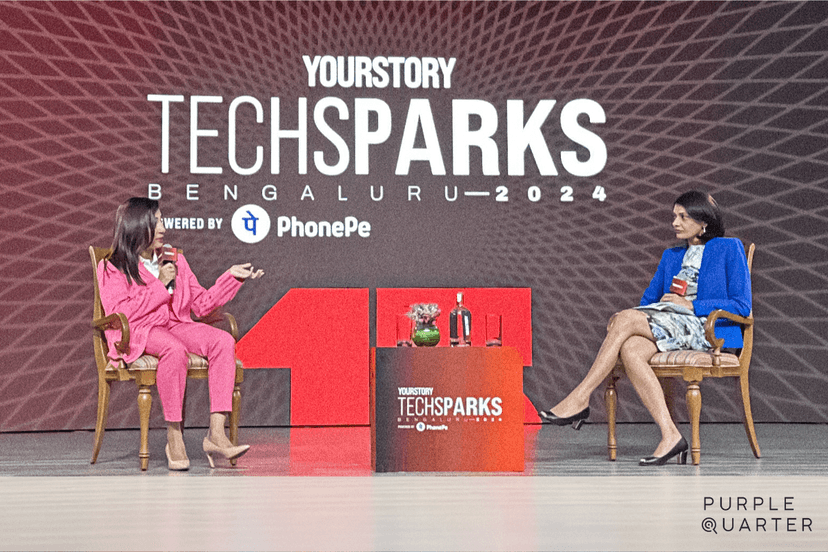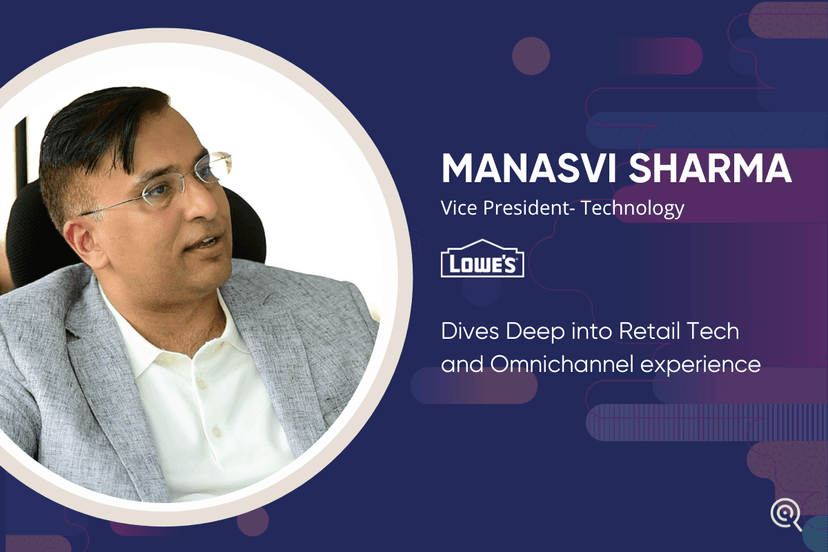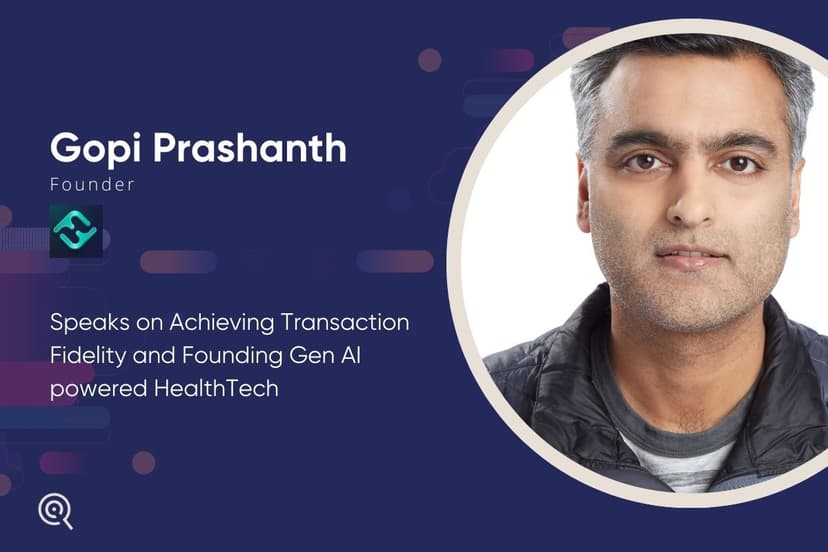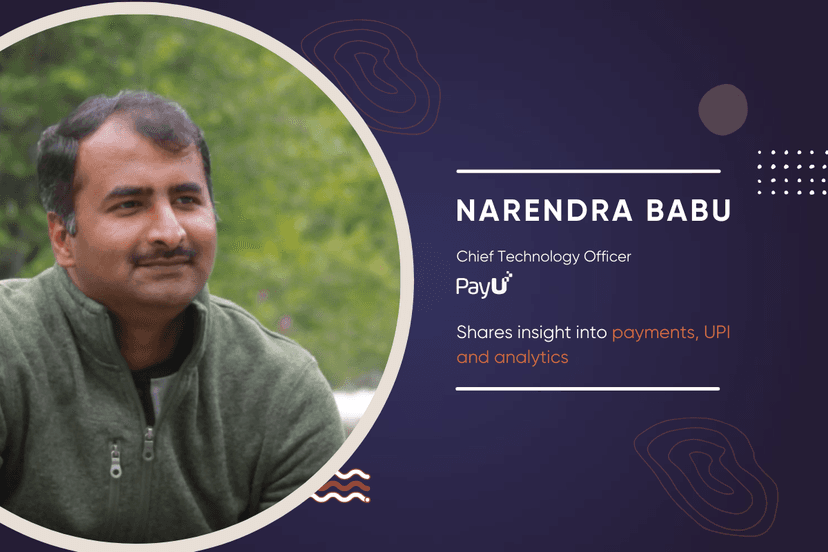Subscribe to Our Newsletter
Receive exclusive updates and insights directly in your inbox.
Receive exclusive updates and insights directly in your inbox.

<p><span style="color: inherit; font-family: Figtree">The Dubai FinTech Summit 2025 served as a pivotal platform where global innovators, investors, and regulators converged to explore the evolving frontier of financial technology. Against a backdrop of groundbreaking conversations on digital assets, AI integration, and cross-border fintech collaboration, the event underscored Dubai’s growing stature as a global fintech hub.</span></p><p><span style="color: inherit; font-family: Figtree">As a premium bronze sponsor,</span> <a target="_blank" rel="noopener noreferrer nofollow" class="text-primary underline" href="https://www.purplequarter.com"><span style="color: rgb(216, 106, 68); font-family: Figtree">Purple Quarter</span></a> <span style="color: inherit; font-family: Figtree">was uniquely</span> <span style="color: inherit; font-family: Figtree">positioned to engage directly with the ecosystem’s key decision-makers. This opportunity provided fresh insights into the increasing complexity of tech leadership needs, highlighting that the right leaders are essential not only to drive innovation but also to deliver sustainable growth in a rapidly shifting landscape.</span></p><h3>Dubai’s Ascent as a Global Fintech Force</h3><p>The<span style="color: rgb(216, 106, 68); font-family: Figtree"> </span><a target="_blank" rel="noopener noreferrer nofollow" class="text-primary underline" href="https://dubaifintechsummit.com/"><span style="color: rgb(216, 106, 68); font-family: Figtree">Dubai FinTech Summit 2025</span></a><span style="color: rgb(60, 26, 15); font-family: Figtree">,</span> hosted by the <a target="_blank" rel="noopener noreferrer nofollow" class="text-primary underline" href="https://landing.difc.ae/innovation-licence-india-offer/?SFID=701Td00000GC9KrIAL&utm_source=Google&utm_medium=cpl&utm_campaign=cr_IND_en_Google_lead-gen_ppc_innolicense_conv_cpl_jan2025_701Td00000GC9KrIAL&utm_content=innolicense&utm_term=lead-gen&utm_sub-source=Innovation_Page&gad_source=1&gad_campaignid=22136787061&gbraid=0AAAAAoNWqVqVIKz2BJ0fxHx0AjOkwDy74&gclid=Cj0KCQjwxdXBBhDEARIsAAUkP6g6-WxszqZ4x__KKQ83Kc2SSq51nLV_Bg6Fj62fLra5yOMg-in3rowaAtkZEALw_wcB"><span style="color: rgb(214, 104, 67); font-family: Figtree">Dubai International Financial Centre (DIFC)</span></a> <span style="color: inherit; font-family: Figtree">and organized by Trescon, took place under the patronage of His Highness Sheikh Maktoum bin Mohammed bin Rashid Al Maktoum, Deputy Ruler of Dubai, Deputy Prime Minister, and Minister of Finance.</span><br><br>More than an industry meet-up, the summit positioned Dubai as a serious player in the global fintech economy. Backed by innovation-driven entities like the <a target="_blank" rel="noopener noreferrer nofollow" class="text-primary underline" href="https://dmcc.ae/"><span style="color: rgb(216, 106, 68); font-family: Figtree">Dubai Multi Commodities Centre (DMCC)</span></a>, the city is building a fintech ecosystem that attracts capital, encourages experimentation, and fosters talent. For Purple Quarter, whose expertise lies in identifying and placing top technology leaders, the summit reaffirmed the importance of strong leadership in driving the region’s rapid fintech growth.</p><h3>From the Summit Floor: Reflections from the Purple Quarter Team</h3><p>Being part of the Dubai FinTech Summit 2025 gave our team invaluable exposure—not just to emerging technologies, but also to the cultural and operational dynamics shaping the MENA region’s fintech future. Here’s how our team experienced it from the ground, through the lens of Purple Quarter's leadership vision.<br><br>For Purple Quarter, the summit opened up critical conversations—not just around emerging tech, but around how business cultures in the Middle East value trust, visibility, and long-term engagement. Let’s hear what <strong>Kiran Satya, Regional CEO</strong>, observed on the ground:</p><blockquote><p><strong><em>"I was impressed by the quality of both the infrastructure and the attendees. Engaging with investors and family offices revealed how important consistent presence and relationship-building are in this market. A collaborative, partner-led approach will likely accelerate traction as the region embraces crypto and homegrown fintech innovation.</em></strong><em>"</em></p></blockquote><p><br>The summit highlighted the vital role of ecosystems in driving fintech innovation, especially where emerging technologies like AI intersect with regional dynamics. As <strong>Avinash Kodical, Principal Consultant,</strong> shares on the insights gained around leadership and transformation:</p><blockquote><p><strong><em>"I was truly inspired by the energy and intent Dubai brings to fintech and AI. Listening to leaders like Vijay Shekhar Sharma underscored that breakthrough technology alone isn’t enough—it requires the right ecosystem to thrive. The event deepened our understanding of the leadership qualities needed to guide organizations through rapid and responsible change."</em></strong></p></blockquote><p><br>In fast-paced global summits, operational execution often becomes the invisible engine behind impact. This was no exception—logistics, brand presence, and on-ground responsiveness made a huge difference. Here’s what <strong>Kiran Lewis, Admin & Facility Manager</strong>, took away from the experience:</p><blockquote><p><strong><em>"What stood out was the scale of networking and operational planning involved. From travel and logistics to last-minute changes, it was a great exposure to how global events such as these come together."</em></strong></p></blockquote><h3><br>Matching Leadership to Vision – <a target="_blank" rel="noopener noreferrer nofollow" class="text-primary underline" href="https://www.purplequarter.com/tech-leader-hiring/leadership-assessment"><span style="color: rgb(213, 104, 68); font-family: Figtree">The Purple Quarter Approach</span></a></h3><p><span style="color: inherit; font-family: Figtree">Purple Quarter has spent over seven years at the crossroads of technology, leadership, and growth—especially in fast-evolving sectors like fintech. We’ve learned leadership demands precision, not templates. That’s how we came to create our proprietary <strong>Behavioural Metrics Model (BMM), </strong>which evaluates 83+ behavioural traits to uncover leaders who fit uniquely within each company’s culture and vision. This approach drives a 90%+ successes and doubles down on long-term retention.</span></p><p><span style="color: inherit; font-family: Figtree"><br>As global capability centres scale and investor interest deepens, leadership needs become increasingly complex. To address this, we developed the Investor Edge Suite, tailored for venture and PE partners to de-risk leadership and accelerate portfolio growth. Led by senior consultants with over a decade of experience, our work spans from CXO profiling to boardroom advisory. At Purple Quarter, leadership isn’t placed — it’s decoded, aligned, and deliberately built.</span><br></p><h3>Wrapping up</h3><p>As the tech landscape evolves, leadership is no longer just about vision—it’s about mastering complexity with agility and cultural fluency. The dialogues from the summit around organizational design, deeptech, AI, and leadership readiness echo the nuanced shifts we see shaping the future. These are challenges that call for leaders who don’t just adapt but anticipate.</p><p><br>Purple Quarter’s footprint across India, MENA, Southeast Asia, and the United States isn’t just about geography—it’s a strategic advantage. This global network fuels our deep understanding of regional ecosystems, especially the vibrant MENA market where investors, startups, and family offices converge to shape the next wave of innovation. By blending behavioural science with market intelligence, we decode and build leadership that empowers organizations to scale with precision and purpose over the next decade and beyond.</p><p><br>If you're building your next layer of tech leadership, we're ready to partner with you.<br><strong>Visit </strong><a target="_blank" rel="noopener noreferrer nofollow" class="text-primary underline" href="https://www.purplequarter.com"><span style="color: rgb(216, 106, 68); font-family: Figtree"><strong>www.purplequarter.com</strong></span></a><strong> to learn more.</strong></p><p><span style="color: inherit; font-size: 16px; word-break: break-word; overflow-wrap: break-word; white-space: pre-wrap; font-family: Gilroy-Regular">For more information, reach out to the </span><a target="_blank" rel="noopener noreferrer nofollow" class="text-primary underline" href="mailto:marketing@purplequarter.com"><span style="color: rgb(216, 106, 68); font-family: Figtree">Marketing Team</span></a></p><p><br></p>
Read More
At TechSparks Bangalore 2024, <a href="https://www.purplequarter.com/roopa-kumar-purple-quarter/">Roopa Kumar</a>, Founder & Group CEO of Purple Quarter, took the stage to share her thoughts on what makes a modern tech leader stand out. Drawing from expertise, Roopa voices the urgency of why today’s leaders have to look beyond the immediate and adopt a broader, purpose-driven mindset. <h5><b>On Hybrid Leadership for a New Era: Aligning Tech Skills with Business Goals</b></h5> <p>“Today’s tech leaders need more than technical prowess; I believe they need a ‘futuristic mindset’ that embraces change and prepares for an unpredictable future. Reflecting on industry shifts—pandemic impacts, funding cycles—has shown me the importance of hybrid leadership.”</p> <p>“For me, hybrid leadership means combining tech expertise with business alignment, and building solutions that are not only advanced but also commercially viable. As leaders, we must guide teams for today’s goals and future-proof success in an ever-evolving industry.”</p> <h5><b>Vision, Influence, and Mentorship: Key Traits for Tech Leaders</b></h5> <p>“In my experience, effective leadership requires more than skills; it’s about influence and communication, especially when engaging diverse stakeholders, from investors to global teams. Leaders must share their vision clearly, aligning everyone toward shared goals.”</p> <p>“I find visionary thinking essential—it’s about balancing immediate wins with long-term goals. Leaders should inspire their teams by connecting today’s projects to future growth. Mentorship, too, is the key; I see it as a necessity for fostering an inclusive tech culture based on empathy and intelligence, helping build future-ready teams.”</p> <h5><b>Leverage Storytelling as a Tool </b></h5> <p>“One of the most impactful tools in my leadership approach is storytelling. It’s not just about crafting a narrative but creating a mission that resonates emotionally. For example, in health-tech, a leader might inspire their team by connecting their work to patient care, fostering a sense of belonging and purpose.”</p> <p>“Storytelling inspires loyalty and a shared sense of ownership, essential for a culture where innovation thrives. Leadership isn’t just about solving technical challenges but inspiring people to connect with a larger purpose and impact.”</p> <h5><strong>Watch the full conversation here:</strong></h5>
Read More
<p>In conversation with Roopa in The Tech Factor by Roopa Kumar, Lowe’s Vice President of Technology shares his vision for omnichannel experience in retail tech, views on hyper-personalization, fundamentals of business and leadership, and much more. In this piece, we take a closer look. </p> <h3><b>Driving success in retail tech</b></h3> <p>Back in 1985, when I first started coding, there were 512 KB machines. Fast forward to the present day, and there's been a drastic change in the technology ecosystem. Throughout this evolution, I had a fundamental realization: it’s crucial to understand the customers' pain points and tailor the solutions accordingly.</p> <p>In the inception of my startup, MyBabyCart, the exposure was limited, in stark contrast to giants like Flipkart, which serve an exponentially larger customer base. Lowe’s has an even greater scale. However, the fundamentals remain the same: identifying the right technology to address customer needs.</p> <p>While a small retail shop might suffice without extensive technology for a limited customer base, scalability introduces a myriad of complexities—ranging from product discovery to the customer journey and delivering an exceptional customer experience (CX). A robust technological foundation becomes indispensable in navigating the challenges associated with growth and ensuring seamless operations on a larger scale.</p> <h3><b>Hyper-personalising customer experience </b></h3> <p>Hype-personalisation in e-commerce is super important - specifically from a retail standpoint and omni experiences. Think of yourself as a customer – you visit sites like Houzz or see something in someone’s house, feel inspired, and do some online research. Now, when we walk into a store, if we have someone who comes to our aid and helps with shopping suggestions, it instantly changes our impression of the store. This is how we commonly perceive hyper-personalisation. </p> <p>But there’s more to it. Hyper-personalization stresses custom requests or requirements; for example, you may want a delivery done in a different slot than your usual time zone or may want to the mode of payment to be convenient Say you start early in the morning for the office and return early in the evening. So you might want delivery slots in the evening. Also, you might want deliveries in a certain way. Again, today, it’s painful to give an OTP during a delivery. These different kinds of customer preferences are really valuable. There are so many things in a customer journey where offering personalized experiences enhances the entire shopping experience. </p> <p>There’s yet another point: personalization is considered to be a machine-driven thing. If I cut out people from personalization, it may or may not cut the butter with the customers. Shopping is a very personal experience – it’s like a therapy; people connect with shopping. It’s important to assess how much assistance they are getting from machines to actually customize the experience. I think this gap is yet to be bridged – how much technology assisted personalisation you actually get. </p> <p> </p> <strong>Watch the full podcast here:</strong>
Read More
<p><!-- wp:paragraph -->At The Tech Factor by Roopa Kumar. The podcast was an interesting conversation between Gopi Prashanth, Founder at Fithub and Roopa Kumar, Founder & Group CEO, Purple Quarter. In conversation with Roopa, the Ex-Amazon techie turned Entrepreneur talks about revolutionising fitness through Gen AI technology. As a serial investor, Gopi touches upon the India investment sentiment, his resonance with Bezos’ Regret Minimization Framework and his decision to pivot into the fitness industry powered with AI.</p> <!-- /wp:paragraph --> <p><!-- wp:paragraph --><strong>Gopi Shares,</strong></p> <!-- /wp:paragraph --><br><!-- wp:heading {"level":3} --> <h3 class="wp-block-heading"><strong>Ideation to Execution of Amazon Go as walk-in walk-out store</strong></h3> <!-- /wp:heading --><br><!-- wp:paragraph --><!-- /wp:paragraph --> <p><!-- wp:paragraph -->Before we zoned in on computer vision, we built and killed 18 technologies—18 different ways of understanding what a user did in the store. These were partially computer vision and non computer vision that were all built and destroyed in our labs. We had to figure out and learn every single technology possible, such as RFID stickers, and quickly experiment with it.</p> <!-- /wp:paragraph --> <p><!-- wp:paragraph -->The question wasn’t just whether it could solve the problem today; it was also whether this has a path - algorithmic, operational, or hardware—so that we get to make a high fidelity transactional system out of it. When you consider the raw signals coming in from all the different sensors that we ended up using, we came to the conclusion that computer vision was the most malleable signal that we could conquer.</p> <!-- /wp:paragraph --> <p><!-- wp:paragraph -->Because your algorithms could continuously evolve over time without having to go back and change the hardware itself, it could take us closer to where we wanted to be for transactional fidelity, which is why we zoned in on computer vision.</p> <!-- /wp:paragraph --><br><!-- wp:heading {"level":3} --> <h3 class="wp-block-heading"><strong>Other use cases of the discovery</strong></h3> <!-- /wp:heading --><br><!-- wp:paragraph --><!-- /wp:paragraph --> <p><!-- wp:paragraph -->If we look at the Palm payment software at Amazon, it came out of a need wherein computer vision could be used to make a human palm their identity because there is enough unique signal over there. They do not require a credit card or a phone. They themselves became their biometric sensor and it was based on very similar computer vision as a malleable platform, on top of which we can keep improving the algorithms to get to the transactional fidelity that is needed for almost credit card payment level accuracy.</p> <!-- /wp:paragraph --><br><!-- wp:heading {"level":3} --> <h3 class="wp-block-heading"><strong>From Agritech and E-Commerce to a Fitness Platform Founder </strong></h3> <!-- /wp:heading --><br><!-- wp:paragraph --><!-- /wp:paragraph --> <p><!-- wp:paragraph -->In the context of the regret minimization framework, I identified two significant regrets. The first revolves around entrepreneurship, and the second centers on neglecting my physical fitness and mental well-being. To put it simply, these two aspects were my paramount desires for correction.</p> <!-- /wp:paragraph --> <p><!-- wp:paragraph -->Before I realised, I had become too preoccupied with wealth creation, career growth (becoming a director at Amazon, long hours coding in the gaming company) and worked towards increasing salaries for a better lifestyle. But it's an endless cycle; once you get in, it's never enough.</p> <!-- /wp:paragraph --><br><!-- wp:paragraph --><!-- /wp:paragraph --> <p><!-- wp:paragraph -->So in that process, the thing that basically ended up falling by the wayside was my personal health and wellbeing along with mental well being. I didn’t experience any episode as such, but simply coming to terms with the fact that I was not making that a top priority, was eye-opening.</p> <!-- /wp:paragraph --> <p><!-- wp:paragraph -->And when I started thinking about my fitness journey, I realized that all the apps out there are just one-size-fits-all. I needed something that was molded around me, that understood me and was able to adapt to what I wanted every day.</p> <!-- /wp:paragraph --><br><!-- wp:heading {"level":3} --> <h3 class="wp-block-heading"><strong>The Gen AI Solution </strong></h3> <!-- /wp:heading --><br><!-- wp:paragraph --><!-- /wp:paragraph --> <p><!-- wp:paragraph -->I didn't want to go and do the research to acquire the knowledge needed to be my own trainer. But at the same time, finding a trainer to do this for you on a consistent, daily basis is a very expensive proposition. So when I saw this problem, that's when I realized Generative AI is the perfect solution for this because it can hyper customize for the long tail of use cases. We have figured out the magic behind how to make Generative AI hyper customize things for us. And now it's very quick for us to keep adding new skills or new AI trainers to the platform.</p> <!-- /wp:paragraph --><br><!-- wp:paragraph --><!-- /wp:paragraph --> <p><!-- wp:paragraph -->The AI trainer is a chatbot. But unlike a chatbot, when you turn things off, it doesn't forget you. It remembers who you are. And every single thing that you have said, is condensed into things that matter.</p> <!-- /wp:paragraph --> <p><!-- wp:paragraph -->Watch the full podcast here,</p> <!-- /wp:paragraph --><br><!-- wp:embed {"url":"https://www.youtube.com/watch?v=JNFdu5rLd9o","type":"video","providerNameSlug":"youtube","responsive":true,"className":"wp-embed-aspect-16-9 wp-has-aspect-ratio"} --> <figure class="wp-block-embed is-type-video is-provider-youtube wp-block-embed-youtube wp-embed-aspect-16-9 wp-has-aspect-ratio"> <div class="wp-block-embed__wrapper">https://www.youtube.com/watch?v=JNFdu5rLd9o</div> </figure> <p><!-- /wp:embed --> </p>
Read More
<p><!-- wp:heading {"level":3} --><!-- /wp:paragraph --></p> <h3><b>Challenges Involved With Cross-Border Payments in India</b></h3> <p>There are two main challenges when it comes to cross-border payments in India. The first one is working with the vast networks of financial instruments, like its issuer and other networks to make sure that bridges are built to support as many different instruments as there are. At the core of payments, any payment aggregator has to have integrations with all these institutions. In this way, irrespective of the country, the consumers find it convenient to go ahead and pay the merchant. Thus, the burden gets taken off the merchant who does not need to worry about the bank through which the payment is being issued or which currency the operation is in. </p> <p>The second challenge is compliance with the country's regulations. Every time a cross-country transaction takes place, it also involves a whole bunch of compliance regulations that need to be done such as AML or CFT guidelines. So how does one ensure that the necessary checks and balances are in place for allowing only legitimate transactions while simultaneously blocking spurious transactions? PayU has partnered with Whibmore as a technology provider as they have built sophisticated fraud machines that check whether the compliance rules are valid. It also verifies whether the transactions are valid, or they need to be red-flagged and we have to wait, somebody has to go take a look at these transactions and what further actions have to be taken. In such cases, it is vital to let people know, at the time of the transaction, to inform them of complex transactions, or provide them with an option to block it. <br><br>The main problem of supporting these solutions is not just cross country. Even within India, the sheer number of banks that you have to work with is a large one. In addition, in terms of tech and infrastructure, they're constantly changing. If a customer is traveling to a region like Jammu and Kashmir, they should be able to use their payment instrument to make a sale purchase. </p> <h3><b>How Has UPI Changed the Dynamics of Financial Transactions in India</b></h3> <p>UPI in India has achieved two things. Firstly, it pushed merchants to adopt digital transactions at a significantly faster rate. End customers are now more comfortable because whether it's online or offline, everyone now has QR codes almost everywhere. But the bigger thing UPI did is getting a lot of small merchants into the banking net, which was either under-served or not served before. </p> <p>In reality, the case wasn't that people never opened an account before. The truth is they didn't feel the need for it in the past. This creates a lot of opportunities for customers to look at a lot of other financial products. A simple example would be lending needs. Previously, if people had to borrow money, it was usually at stringent interest rates. But now with their history of banks, it's much easier for people to look at creditworthiness, and lend at much more reasonable rates. Adding technology to this makes it easier to solve lending at scale. One can make decisions, can do much more targeted notifications to users and work with them to minimize defaults. With the number of options that it creates for people to take advantage of in banking, UPI now creates a great platform. And in turn, that boosts the economy.</p> <h3><b>How Does PayU Use Analytics to Help Companies/ Consumers? </b></h3> <p>PayU does analytics and works closely with a few companies to provide analytics for them. Most of the big companies have their own analytics, thus most of the data that PayU receives is already there. When it comes to anomaly transactions that PayU encounters across sites, the real challenge is to notify such things to the government. Currently, PayU is attempting to build a central repository of doubtful transactions or any other data received based on analytics. </p> <p>In addition, analytics is also used for marketing purposes. An important use case is how merchants are using which products or what products they can use and what they can get from those products. PayU can analyze this through its in-house data. On the basis of the analytics collected, PayU can start recommending to its sales team the areas which can be worked upon with these merchants to help them offer the products to their end consumers.</p> <h3><b>Future of PayU - A Tech Perspective</b></h3> <p>Currently, PayU is focusing on building a platform that can last for the next seven to ten years. The objective is to establish a truly distributed model, because the amount of digital financial growth happening in India is tremendous. With the introduction of UPI and more people entering the banking sector, nowadays almost any big merchant needs to have an online presence. This is also allowing companies to create a lot of financial products and people are starting to switch over to using these products. PayU is therefore building a robust platform to ensure that these requirements are constantly met in the years to come.</p> <p><strong>Watch the full episode here :</strong></p> <p>https://www.youtube.com/watch?v=PSIbHNyTk9U&list=RDCMUCRf6fzq1SAI0hc4WN4elCdQ&start_radio=1</p>
Read More
<p>At The Tech Factor by Roopa Kumar. The podcast was an interesting conversation between Suyash Motarwar, Vice President and Head of Technology B2B at PharmEasy and Roopa Kumar, Founder & Group CEO, Purple Quarter. During the conversation, Suyash talks about his stellar career in technology and presents a deep understanding of the B2B landscape, his role in driving innovation and spearheading technological advancements within PharmEasy. <strong>Suyash Shares,</strong> <h3><strong>Healthcare Scenario in India</strong></h3><p> The healthcare ecosystem in the country has been left out in terms of the application of technological advancements. The progression of technology in B2C is far ahead when compared to B2B. Age-old systems are used in supply chains, and twenty-year-old tools such as technology stacks are used by Pharma manufacturers and distributors. Moreover, earlier major parts of commerce were done on pen and paper. This is where a wide space and opportunity was discovered allowing a competitive advantage while solving the problem effectively. The B2B Pharma supply chain has three major stakeholders - manufacturers, Pharma distributors and neighbourhood retailers that eventually cater to the needs of the consumer. While PharmEasy has built multiple tools for every stakeholder, the dominant use case has been how to solve commerce through technology between the pharma retailers and distributors. Traditionally, it has been a pen-and-paper business where distributors have a set of relationship managers and salesmen working with the retailers who work with multiple distributions in the city or region and try to complete their procurement. </p><h3><strong>Vision at PharmEasy </strong></h3><p> The vision towards building PharmEasy was to completely democratize this commerce by building a marketplace which allows distributors and retailers to discover each other through a technology platform. Adoption of technology and making people believe in the process posed as major challenges along with regulations and external factors. However, there was also a competitive advantage since PharmEasy invested in building the layers. A typical marketplace has two sides- the seller and the consumer. The B2B Pharma ecosystem witnesses a peculiar problem because the seller on the platform is unlike other major B2C platforms. The distributors on the platform run commerce in their own world. They use ERP software that handles all the tasks such as transaction, accounting and inventory management. The distributors cater to businesses in both offline and online fashions which stays as a source of truth for the distributor. While building a B2B marketplace, it is significant to stay closer to that source of truth as much as possible in contrast to a B2C platform where the source of truth is that platform since the pricing and inventory are managed on that platform. A constant deep integration with the distributor ecosystem is necessary to guarantee that a superlative experience is provided to the consumer layer. The marketplace makes promises to its consumers such as delivering the product at the desired time and correct price. The problem is making sure that the promises are met on a large scale all the time. The challenge faced in the distributor world is getting into the depth of the ERP ecosystems. Further, the ERP market is highly fragmented within the country, with close to 150-200 operators across India which had to be integrated into the system. The initial investment was to build infrastructure components and integrations and allow the commerce layers to flourish simultaneously. In today’s time, there is a clear impact in terms of how commerce is done in the B2B segment. </p><h3><b>Application of Best Practises as a Tech Leader in PharmEasy </b></h3><p> There are some first principles of software engineering around how to architect your system and what NFRs are. In this ecosystem, it is also important to understand the current experience that stakeholders are accustomed to. Another learning is that there isn’t one product that fits pan-India. Every state has their own regulations of the sale of a product; hospital chains might have their own contracts with manufacturers and thus, there is no single solution that fits all. There is a common denominator with overrides for specific geographies, hospitals and chain of distributors that need to be applied. The technological design needs to be as such that can be customized at a microlevel. The nature of fragmentation of the Pharma supply chain in India is completely opposite to that of in the US. There are a single digit number of distributors in the US controlling the supply of all Pharma products within the Country. In India, that number is more than 80,000 and each distributor runs in their own world, without a standardization of catalogue and barcoding. PharmEasy is actively working towards solving this problem by creating a universal pharma catalogue and making sure that a retailer and distributor can talk in the same terms across India. This will give an understanding of what is getting sold and then influence the commerce in the right fashion. Watch the full podcast here, </p></p>
Read More